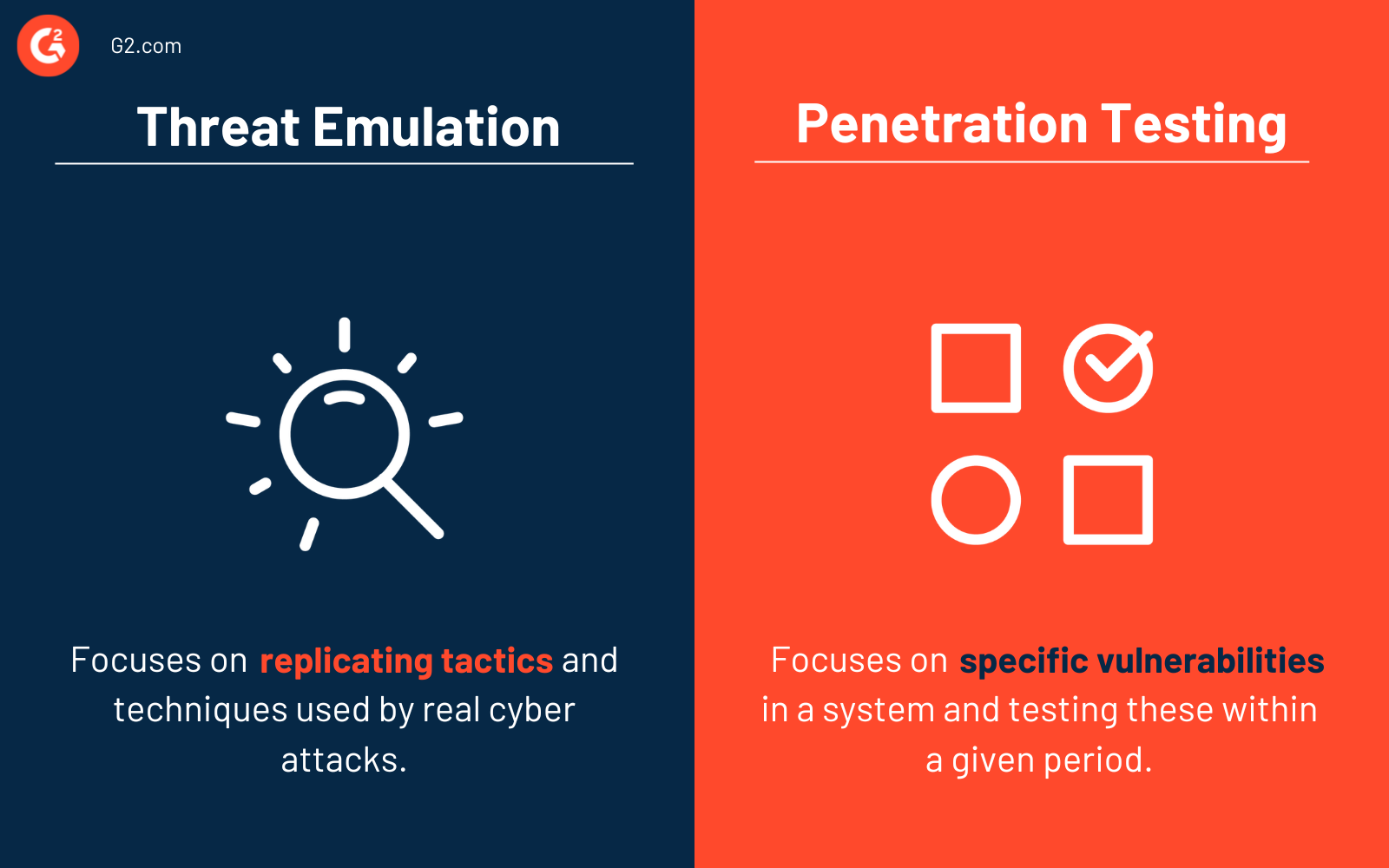What is threat emulation?
Threat emulation is a proactive approach to cybersecurity, where a real-world threat is replicated and simulated in a controlled environment to test existing cybersecurity systems.
Threat emulation aims to assess current systems and identify areas of weakness where a cyber attack could infiltrate a business’ network.
Typically, past known attacks are used as the basis for threat emulation and are mimicked in network sandboxing software. This is a safe digital space where the threat can be replicated and run without impacting active business systems on the network.
Basic elements of threat emulation
When conducting a threat emulation test, teams should follow several steps to ensure the test is as accurate as possible. These steps include:
- Applying known threat intelligence: Any information the team can gather about the real threat being recreated will make the simulation more impactful. Collecting data on all threats a business could face should be an ongoing process.
- Identifying assets in the system: While real attack data is useful, the target of the attack will likely have had different assets from those being tested in the threat emulation. Knowing what assets the business has and how these could be used in a threat emulation makes results more successful when building a strong cybersecurity program tailored to the company.
- Assessing existing cybersecurity software: It’s also important that any attack mitigation tools the company already has, like antivirus software, are factored into the threat emulation test. This allows the team to review the tools' capabilities and identify gaps in the system.
Benefits of threat emulation
Being prepared for a possible cyber attack can save businesses thousands, if not millions, of dollars. Two of the biggest benefits of running threat emulations are:
- Understanding the effectiveness of security measures: Any tool the business currently has for cybersecurity should be frequently reviewed and tested to ensure that any response is appropriate and keeps important data safe. Knowing current tools are effective, or finding vulnerabilities in the system and planning for upgrades as a result, is the most critical function of emulation testing.
-
Testing the team’s response to an attack: Threat emulation is about knowing whether the company's cybersecurity systems can deal with an attack and trusting its IT team to handle possible threats. With threat emulation, the team's responses, such as task delegation and speed, are vital to assess and improve if an attack occurs.
Threat emulation best practices
Any threat emulation test should be created to be as similar to the original attack as possible. To do this, several best practices should be followed, including:
- Choose objectives before testing: Any test should have measurable goals and objectives attached and laid out clearly before testing begins. Most threat emulations aim to find vulnerabilities in the system, but teams can be even more specific about the type of vulnerabilities they’re looking for with each test.
- Work in a suitable test environment: The sandbox created for the test doesn’t need to exactly match the real systems run by the business. However, the closer the match is, the more relevant the data and insights will be following the test’s conclusion.
- Review and eliminate false positives: Threat emulation tests should never be conducted just once. Running the tests multiple times will flag any anomalies or false positives that can skew data, which is essential for greater accuracy. When changes to cybersecurity systems are made based on these results, this becomes even more critical.
Threat emulation vs. penetration testing
While both threat emulation and penetration testing benefit a business looking to test its cybersecurity, there are important differences between the two.

Threat emulation primarily focuses on replicating tactics and techniques used by real cyber attacks.
Penetration testing focuses on specific vulnerabilities in a system and testing these within a given period. The goal is to concentrate on one or two vulnerabilities rather than the methods used to exploit those vulnerabilities (which is what threat emulation is for).
In many cases, both threat emulation and penetration testing can be used to create a more comprehensive cybersecurity test.
Monitor for new threats and understand where current security infrastructure can be improved with threat intelligence software.

Holly Landis
Holly Landis is a freelance writer for G2. She also specializes in being a digital marketing consultant, focusing in on-page SEO, copy, and content writing. She works with SMEs and creative businesses that want to be more intentional with their digital strategies and grow organically on channels they own. As a Brit now living in the USA, you'll usually find her drinking copious amounts of tea in her cherished Anne Boleyn mug while watching endless reruns of Parks and Rec.

